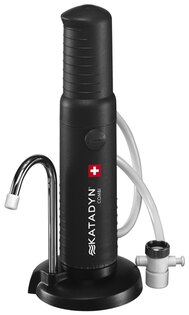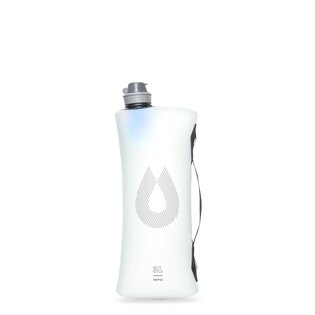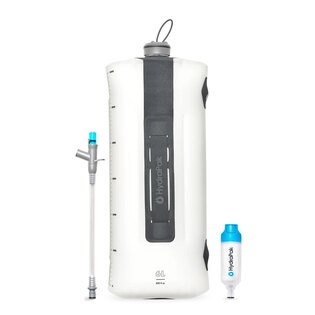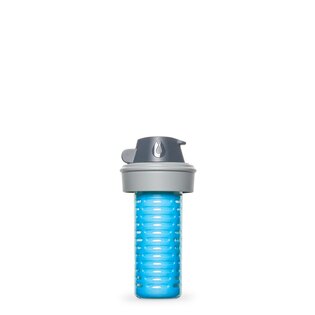72 Hours of Self-Sufficiency – Why It Pays to Be Prepared
How do you prepare for unexpected disruptions to electricity, water, or access to essential supplies? Today, emergency preparedness isn't extreme—it's a practical life skill. In this first article, we explain what “72-hour self-sufficiency” means, why everyone should consider it, and how to prepare both practically and mentally.
Picture a normal evening. You’re making tea, rain taps on the windows, your phone is playing music. Suddenly—darkness. The power’s out. No lights, no mobile signal, no heat. The store’s cash registers are down, and your home heating has stopped. Within two days, your water might stop too.
This isn’t science fiction. But it’s also not a reason to panic. The key is being prepared to manage the first 72 hours on your own.

Basic equipment prepared in a backpack. A few carefully selected items can ensure your self-sufficiency even in more demanding conditions.
What Does “72-Hour Self-Sufficiency” Actually Mean?
Emergency services, government agencies, and fire departments will respond—but not always immediately. In the first three days following a major crisis (like a blackout, flood, or cyberattack), direct assistance may not reach you.
That’s why your household should be able to function independently for 72 hours without:
- Electricity.
- Water or gas supply.
- Access to shops or services.
- Internet or mobile connection.
This isn’t about long-term self-reliance—it’s about bridging the gap during those critical first days when public systems may be overwhelmed.
What (Not) to Expect from the Government in an Emergency
Important to understand:
- Government agencies prioritize protecting lives and infrastructure first.
- Individual assistance often comes later—and not even everywhere at once.
“When it rains, we take out an umbrella. We don’t wait for someone to put up a roof.”
This is exactly how crisis preparedness works.

Self-sufficiency means being prepared even when you’re away from home. A crisis doesn’t have to mean panic if you know what to do.
Preparedness ≠ Panic
Being prepared isn’t about fearing the worst. It’s about having the confidence to manage unexpected events calmly. Self-sufficiency gives you the ability to act instead of waiting helplessly—and it reduces stress. Just like carrying a spare tire in your car, having emergency reserves at home isn’t about pessimism. It’s about foresight.
Mental Resilience: Survival Isn’t Just About Supplies
Crisis readiness isn’t only about stockpiling. It’s also about staying calm, adapting to disruption, and maintaining your psychological balance. When communication fails and information is scarce, it’s your mindset that gets you through.
Mental resilience isn’t a superpower—it’s a skill anyone can develop. And the best part? You can start building it right now, at home.
“Crisis resolution begins in the head.”
✅ How to Stay Calm Under Pressure:
- Have a plan. Knowing what to do reduces anxiety; winging it increases stress.
- Adjust your expectations. Comfort may not be possible—but adaptability is.
- Take small steps. Make tea, jot notes, talk through plans with loved ones. Little actions bring calm.
- Reach out. A simple “Are you okay?” can make a big difference. Isolation fuels anxiety—connection eases it.
- Maintain routines. Meals, hydration, coffee breaks—rhythm fosters stability even during crisis.
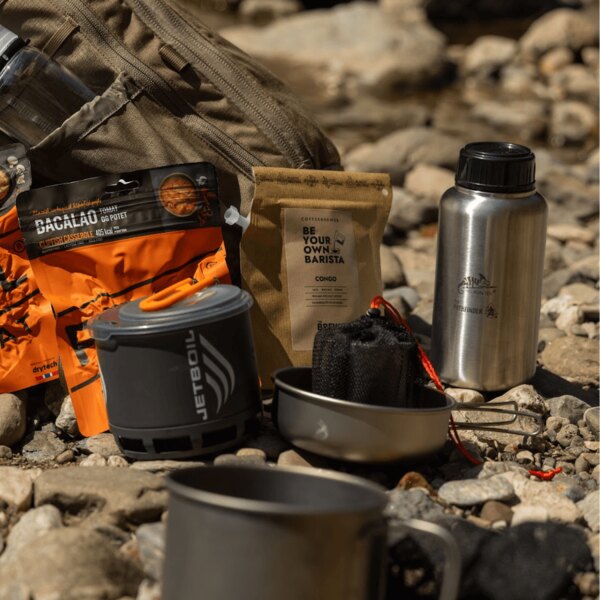
Emergency food, water and a field stove. Even simple equipment is enough if you know what you really need.
Helping Others Helps You Too
In times of crisis, being active is beneficial—for others and yourself. Whether it’s preparing meals, reassuring children, or checking in on neighbors, helping builds your own psychological stability. It fosters purpose, strengthens connection, and grounds you in the present. This isn’t about heroism—it’s about human connection.
Education is Part of Preparedness
Knowledge reinforces resilience. Preparing mentally means learning practically. Take a refresher in first aid. Learn how to use a portable stove or water filter. Test your flashlight’s battery life.
“What you learn in peace stays with you in a crisis.”
TIP: Ready to take your preparedness to the next level? Try the SEALTAC Home Defense course. It’s not a bootcamp—it’s a practical, real-world approach to home defense, crisis planning, and communication. Learn more in our interview with instructor Michal Ščepko.
In Summary: What Is 72-Hour Self-Sufficiency?
It’s the ability to support yourself and your household for three days without relying on external help—physically, logistically, and mentally.
📌 What it means to be prepared for 72 hours
- ✅ Have food, water and basic equipment for 3 days
- ✅ Know what to do if the system stops working
- ✅ Have peace instead of chaos when something happens
- ✅ Maintain mental stability through simple habits
🔜 Coming Next
In the upcoming articles in this series, we’ll dive into specific strategies for:
- What food and water supplies to stock.
- What essentials to have during a blackout.
- How to pack a “go bag” in case of evacuation.
- And how to organize everything without added stress.
📚 Series: 72 hours of self-sufficiency
-
Part 1:
Why we need to be prepared
Introduction to 72-hour self-sufficiency. What can happen and why it makes sense to be prepared. -
Part 2:
Food and water
What foods and how much water to keep at home. Practical guide and recommended products. -
Part 3:
Home supplies and hygiene
How to survive a power outage: Light, heat, cooking and basic healthcare. -
Part 4:
Evacuation backpack and checklist
What to pack if you have to leave home in minutes. Complete list and recommendations.
Readers are further interested





























































































































